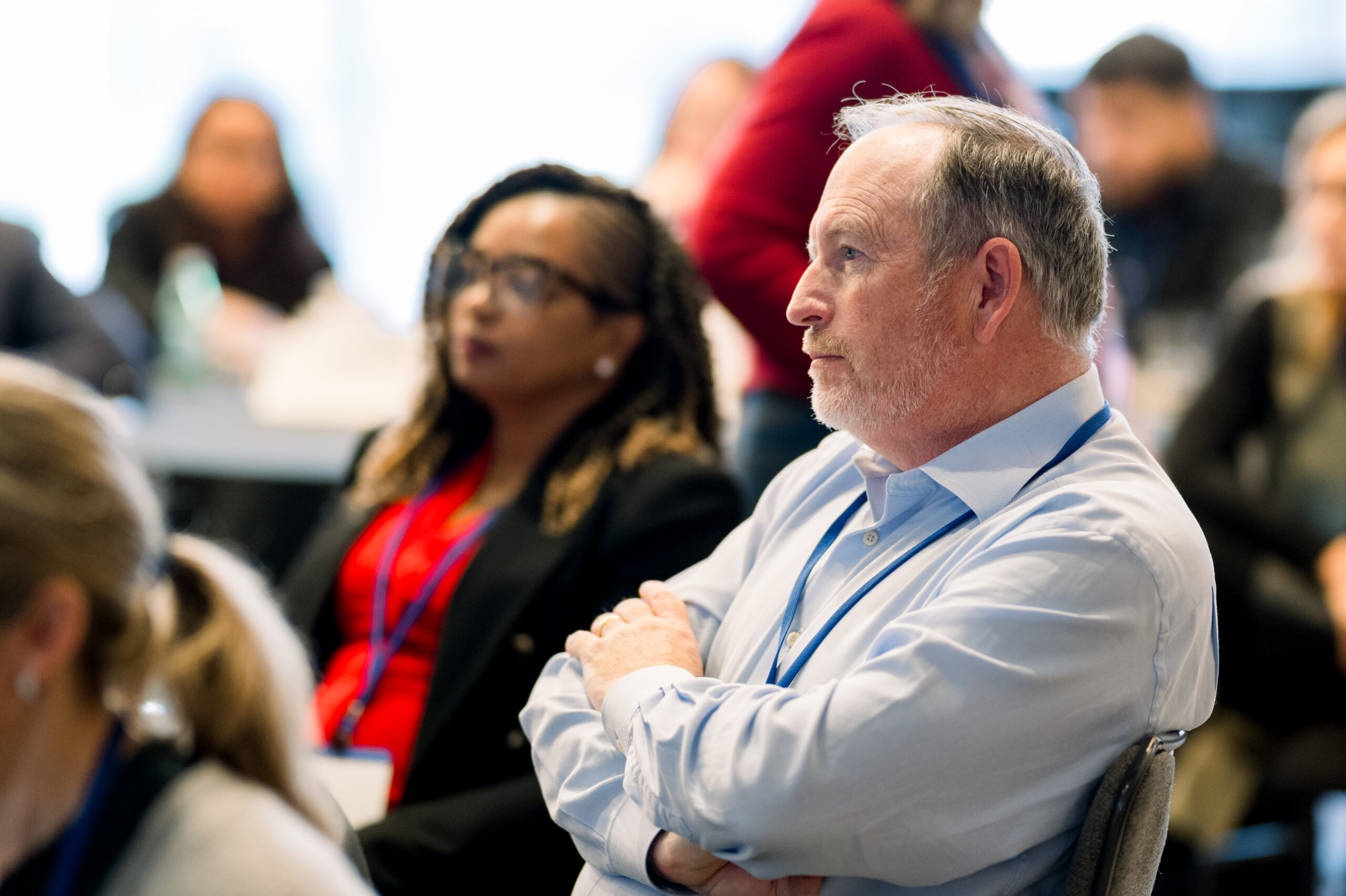Why the Federal Reserve studies investments in America’s workforce


The Federal Reserve’s “dual mandate” involves price stability and maximum employment. What this means is that the Board of Governors of the Federal Reserve System, and more specifically the Federal Open Market Committee (FOMC), has a monetary policy objective of price stability and maximum employment. There are many factors that affect the dynamics of the labor market, they can change over time, and they may not be directly measurable. Atlanta Fed President Raphael Bostic describes his perspective on maximum employment this way: “I like to think of it as maximum sustainable employment, a state in which all Americans can maximize their human capital and find work that puts their skills to their highest and best use.”
The Federal Reserve engages in a number of activities that foster maximum employment, including research, data analysis, thought leadership, convening, and community engagement. These actions serve to both inform monetary policymakers about labor market conditions and support cross-sector approaches to investing in America’s workforce.
Increasingly, the Fed’s Community Development function is driving activities aimed at better understanding barriers that low-income individuals face to employment and careers. For example, in 2014 the Atlanta and Kansas City Feds partnered with the John J. Heldrich Center for Workforce Development at Rutgers University on a collection of research, policy, and practice reflections, published in 2015 as Transforming U.S. Workforce Development Policies for the 21st Century.
In 2017, community development leaders across the Federal Reserve System undertook a national initiative to explore the current state of labor markets for low-income workers and jobseekers and ideate on future needs to create conditions for economic opportunity—for both workers and businesses. This effort, “Investing in America’s Workforce,” involved research, promising practices, and convening leaders from across the country to frame workforce development efforts as investments in broad economic growth—instead of as social services—and to uplift replicable, scalable solutions with measurable outcomes. In other words, solutions that show a return on those investments.
Conducted from 2017-2019, the Investing in America’s Workforce initiative was conducted in collaboration with the John J. Heldrich Center for Workforce Development at Rutgers University, the Ray Marshall Center for the Study of Human Resources at the University of Texas at Austin, and the W.E. Upjohn Institute for Employment Research. The effort included a series of listening sessions across the country to identify key themes to be studied or highlighted; a national conference featuring discussions on promising workforce development practices; publications including a three-volume book (Investing in Workers, Investing in Work, and Investing in Systems for Employment Opportunity); and special briefs exploring topics like digital skills, rural workforce development, and new financing models, among others.
Since 2019, when the Investing in America’s Workforce research was published, the labor market has experienced notable changes. The economy and labor market were shocked by the COVID-19 pandemic, with unemployment spiking at 14.8% in April of 2020 and then, three years later, dropping to a 50-year historic low of 3.4% in April 2023. During this period, supported by efforts like the Rework America Alliance to advance skills-based workforce development, some employers began shifting hiring practices to increase access to their jobs for a wider range of workers.
In 2022, the Federal Reserve initiated the Worker Voices Project, aimed at capturing non-degreed workers’ experiences with and views on employment during these turbulent years. Through our focus groups, we learned that many workers without a degree struggled to connect to new or different jobs. Our research also found that the way people worked and the skills employers sought were changing. Remote work and productivity increased across many industries. In addition, 92% of all job ads by 2021 required their applicants to have at least one digital skill, highlighting the technological shifts affecting the job market.
Pandemic shocks notwithstanding, the labor market changes all the time in response to many factors: changes in skill needs, accessibility of education and skill-development opportunities, rising cost of living and wage levels, technological advancements, and policies on workforce and economic development. These factors and others are a constant that affect the strength, competitiveness, and growth of the economy. This constant evolution in the labor market is why understanding approaches to investing in America’s workforce continues to be important for the Fed’s role in promoting maximum employment. It’s why the Federal Reserve focuses on workforce issues, primarily through our Community Development research and community engagement.
Below are examples of this work. Our hope is that community development professionals can connect the Fed’s research and data to the work they are doing in communities across the nation.
Capturing the full picture of the labor market means looking beyond the numbers to consider the experience of everyday workers and job seekers. The Worker Voices research, co-led by the Atlanta and Philadelphia Feds, was conducted beginning in 2022 to provide a unique view into how job seekers and workers in lower-wage roles navigated the labor market at the onset of the COVID-19 pandemic and through recovery. Findings detail barriers workers experienced, workers’ views on job quality, educational investments they made in themselves, and their self-employment aspirations. You can use this data to better understand and respond to worker needs in your community, and leverage a toolkit developed from lessons learned on this research and best practices about how to collect information for your community. More research will come on confidence and concerns through continued engagement with workers and through partnerships with organizations like the SkillUp Coalition.
Low-income working families may experience a variety of financial barriers that could limit their economic mobility. Fed researchers focus on the “benefits cliff”. Spearheaded by the Federal Reserve Bank of Atlanta’s Advancing Careers Initiative, this research focuses on a collection of financial barriers a low- and moderate-income person or family may navigate in their career journey. The “benefits cliff” is when a person experiences a reduction or loss of public assistance which has a greater financial value than an increase to their income or wages from hours worked, which can leave families financially worse off during their career progression. The Atlanta Fed provides tools to help workers and career counselors spot and prepare for the cliffs before they happen, as well as tools to explore policy alternatives and other innovations.
One significant barrier for families with young children is access to child care. Affordability and availability of these programs are two issues the Federal Reserve conducts research on. Across the Federal Reserve System, staff work together to explore how these challenges impact working families and the child care sector at national and local levels. Their goal is to understand and quantify the problems and implications of inaccessible child care and highlight innovative approaches.
Innovative financing approaches, new investment mechanisms, and results-driven partnerships are one way that the public, private, and education sectors are addressing the skills gap and driving economic mobility. In today’s rapidly changing economic landscape, these approaches to funding and financing workforce development—which feature shared accountability and shared financial risk—are helping to meet the challenge of fostering full employment. The Federal Reserve Banks of Atlanta, Chicago, Richmond and Philadelphia have been working with The Social Finance Institute to pull together research and insights from the field on these models of outcomes-based funding. Check out examples of these approaches in the Workforce Realigned Volume 1 book and accompanying podcasts.
The Cleveland Fed’s Policy Summit, held biennially, explores practitioner and policy solutions to challenges facing low- and moderate-income communities across the nation. The 2025 conference, “Building Strong and Sustainable Communities,” featured national research on workforce development programs and policies affecting economic mobility, expanding the supply of the workforce in critical sectors, and creating pathways to quality jobs. Explore materials from this year’s and prior Policy Summit events.
Understanding employment conditions requires evidence from a wide spectrum of sources. The Fed has convened a periodic national research conference, Uneven Outcomes in the Labor Market, which brings together researchers, policymakers, and practitioners to highlight research and practices examining disparities in employment, labor force participation, income, and wealth across demographic groups. Explore materials from the 2021 and 2024 virtual conferences.
Each regional Reserve Bank focuses on macro and regional workforce topics. Much of the Fed’s regional research and community engagement focuses on issues pertinent to regional economies. For example, some Reserve Banks focus on rural workforce development because their area is disproportionately rural. Some conduct work that is responsive to local experiences with workforce policy and labor market navigation, reflecting on, for instance, the impacts of automation on an industry and the effects that automation has on careers.
Reach out and engage with us! Our Community Development experts are in each regional Reserve Bank District across the country. We want the research we conduct, the data tools we develop, the conversations we can convene, and the insights we can share on economic challenges facing lower-income communities to meaningfully advance economic access in your community and across the country.

Industrial flex space has become a quiet favorite among sophisticated investors seeking durable income backed by real business demand. If...

Getting an inheritance is the epitome of a mixed blessing. You receive a financial windfall, but the cause is the...

During his tenure as the California Secretary of Health and Human Services, Mike Wilkening cemented his reputation as a steady...